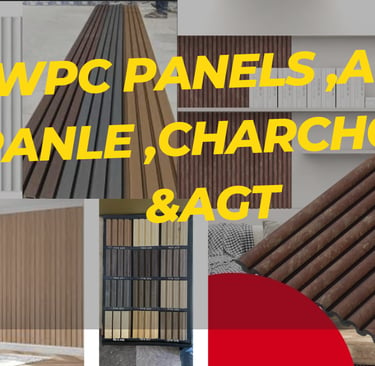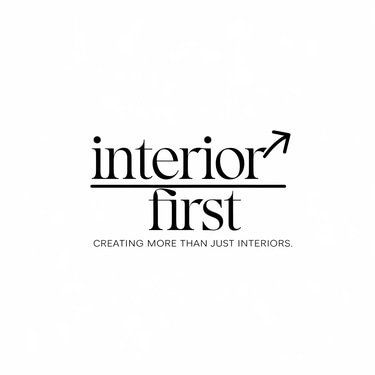Enhancing Spaces: The Beauty of PVC, WPC Louvers, and AGT Panels for Walls and Ceilings
2/25/20255 min read


Introduction to Decorative Paneling
Decorative paneling has emerged as a vital component in both residential and commercial design, offering an array of aesthetic and functional benefits. Among the most popular options are PVC , WPC (Wood Plastic Composite) louvers, and AGT (Advanced Green Technology) panels. These materials have garnered attention due to their versatile applications and superior advantages over traditional materials like wood and plaster. As modern design continues to evolve, these innovative solutions stand out for their durability, ease of maintenance, and environmental considerations.
PVC louvers are lightweight, resistant to moisture, and available in various designs, making them an ideal choice for spaces prone to humidity and changing weather conditions. Unlike traditional wooden louvers, which may warp or decay over time, PVC options provide enhanced longevity while maintaining their aesthetic appeal. This eco-friendly choice does not compromise on style, as it comes in a myriad of finishes and colors that can complement any interior or exterior theme.
WPC louvers combine the benefits of wood and plastic, offering a strong and resilient product that is less susceptible to environmental stressors. This hybrid material excels in resisting rot and insects, ensuring that the louvers maintain their integrity over time. WPC is especially appealing for eco-conscious consumers, as it often utilizes recycled materials, reducing waste while promoting sustainability in design practices.
AGT panels further exemplify the advancements in decorative paneling. These panels are recognized for their sleek appearance and versatility, making them suitable for walls, ceilings, and even furniture applications. AGT panels are lightweight, easy to install, and require minimal upkeep, thereby accommodating the fast-paced demands of modern lifestyles. Their advanced design incorporates eco-friendly materials and production processes, aligning with the growing trend of sustainable architecture.
In conclusion, as more homeowners and businesses seek innovative and sustainable design solutions, the popularity of PVC, WPC louvers, and AGT panels is likely to continue. Their unique attributes position them as valuable alternatives to traditional materials, setting the stage for more in-depth discussions on their individual features and applications in the following sections.
Understanding PVC Louvers
PVC louvers have gained significant popularity in interior and exterior design due to their remarkable properties and versatility. Made from polyvinyl chloride, a durable plastic material, these louvers offer a lightweight alternative to traditional wooden or metal louvers, making them an excellent choice for a wide range of applications. Their composition allows for a variety of colors and finishes, ensuring that they can effortlessly blend with any decorative theme.
One of the primary benefits of PVC louvers is their exceptional durability. Resistant to moisture, they are ideal for areas prone to high humidity, such as bathrooms, kitchens, and outdoor settings. Unlike wood, which can warp or rot when exposed to moisture, PVC maintains its integrity, making it a long-lasting solution for homeowners and designers alike. Maintenance is also simplified, as these louvers are easy to clean and do not require frequent painting or staining, thus saving time and resources over the years.
In terms of aesthetics, PVC louvers provide a modern and sleek appearance that can enhance the visual appeal of any space. They are often used in both residential and commercial environments, serving functions ranging from privacy screening to ventilation. The ability to control airflow while still allowing natural light to enter a room without compromising privacy makes them a versatile choice for many designers.
Installation of PVC louvers is straightforward, ensuring that even DIY enthusiasts can undertake the process with relative ease. They can be installed horizontally or vertically, depending on the desired look and function. Proper positioning can enhance bright airy spaces by directing light while simultaneously creating secluded areas, thus making them a favorite in both functional and decorative applications.
Exploring WPC Louvers and Their Benefits
Wood Plastic Composite (WPC) louvers have gained popularity in recent years due to their unique properties that combine the aesthetics of wood with the durability of plastic. This innovative material offers a sustainable solution for enhancing both indoor and outdoor environments. One of the primary advantages of WPC louvers is their eco-friendliness, as they are often made from recycled wood fibers and thermoplastics. This makes them an attractive choice for environmentally conscious consumers looking to minimize their carbon footprint.
In addition to being environmentally friendly, WPC louvers are known for their long-lasting nature. Unlike traditional wood, they do not warp, crack, or splinter, making them a resilient option for areas subjected to varying weather conditions. Their resistance to mold and mildew further enhances their appeal, especially in humid or damp environments. This characteristic significantly reduces maintenance efforts, allowing homeowners and builders to enjoy the beauty of louvers without the worry of frequent repairs or replacements.
WPC louvers come in a variety of styles and finishes, making them versatile enough to complement any design aesthetic. From contemporary minimalist designs to more classic looks, these louvers can be easily integrated into various architectural themes. The option to choose different colors and textures allows for creative expression, permitting designers to play with contrasts and harmonies in any space.
When incorporating WPC louvers into a design, it is important to consider aspects such as placement, spacing, and light management. Proper arrangement can enhance natural lighting while providing privacy, thus balancing functionality with aesthetics. With a growing array of design tips available, architects and interior designers can effectively utilize the benefits of WPC louvers to elevate their projects.
AGT Panels: A Modern Touch for Walls and Ceilings
AGT panels have emerged as a prominent choice in contemporary interior design, thanks to their innovative structure and aesthetic appeal. The beauty of AGT panels lies not only in their visual impact but also in their versatility; they can seamlessly integrate into various room styles, from modern minimalist to rustic chic. Their modern design enhances the ambiance of any space while providing practical benefits, making them ideal for both residential and commercial applications.
One of the outstanding features of AGT panels is their suitability for various environments. They can be utilized as wall coverings or ceiling treatments, allowing homeowners and designers to create unified, stylish spaces. Moreover, the panels are available in a wide range of colors, textures, and finishes, enabling users to select the perfect option to complement existing decor. The ability to customize AGT panels ensures that each installation provides a unique visual statement, transforming ordinary walls and ceilings into striking focal points.
Installation of AGT panels is straightforward, offering time-efficient solutions for those seeking a home upgrade. Various mounting methods are available, ranging from adhesive applications to mechanical fastening, which enhances their adaptability in different settings. The installation process can typically be completed with minimal disruption to daily routines, making it an attractive option for busy households. In 2023, trends indicate a growing preference for environmentally friendly materials, and AGT panels often meet sustainability criteria, appealing to eco-conscious consumers.
When choosing AGT panels, considering the right color and texture is crucial for achieving the desired aesthetic effect. Lighter shades can open up smaller spaces, while darker hues add depth and sophistication. Textured finishes can emphasize or soften light within a room, guiding the overall design narrative. In conclusion, AGT panels present a modern, stylish solution for enhancing walls and ceilings, elevating interior spaces to new heights of elegance and functionality.
ADDRESS
Mira Road, Mumbai
CONTACT US
EMAIL US
interiorfirst©2025. All rights reserved
+91-8850753578
